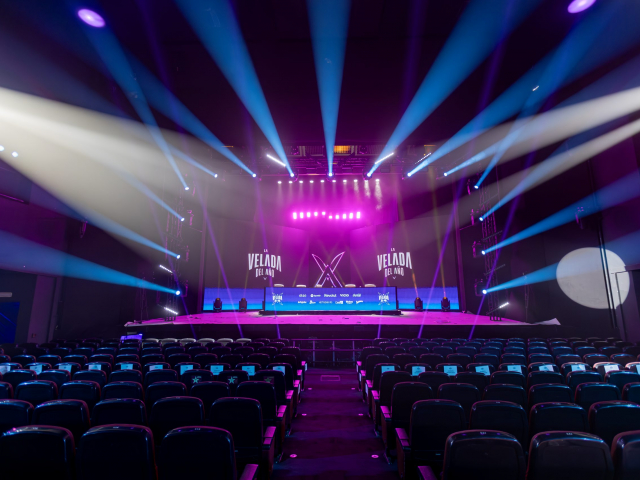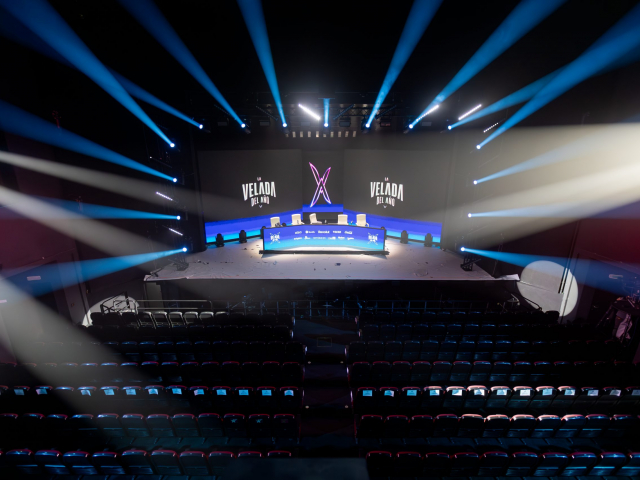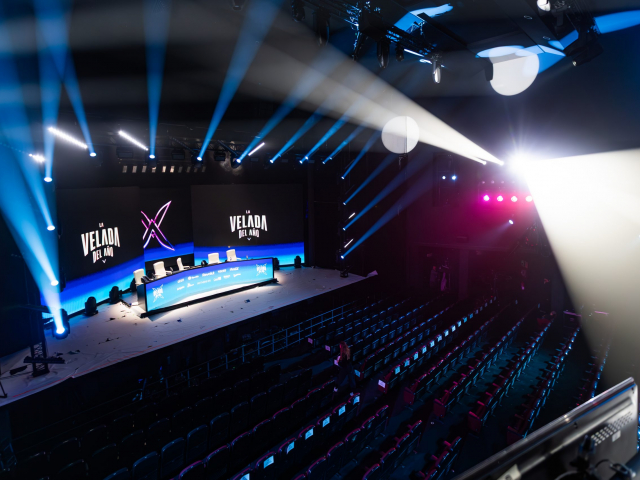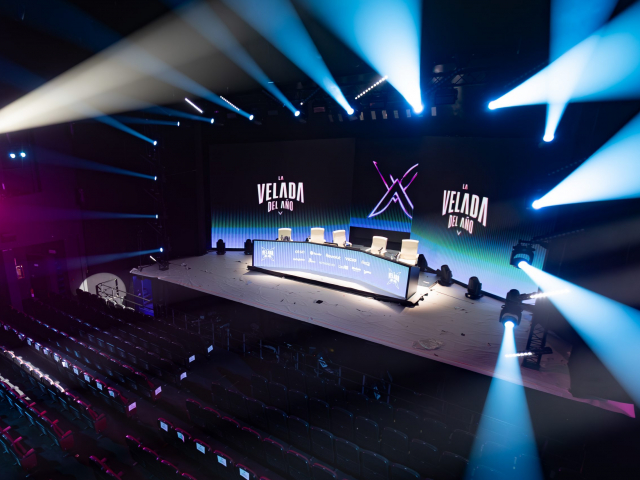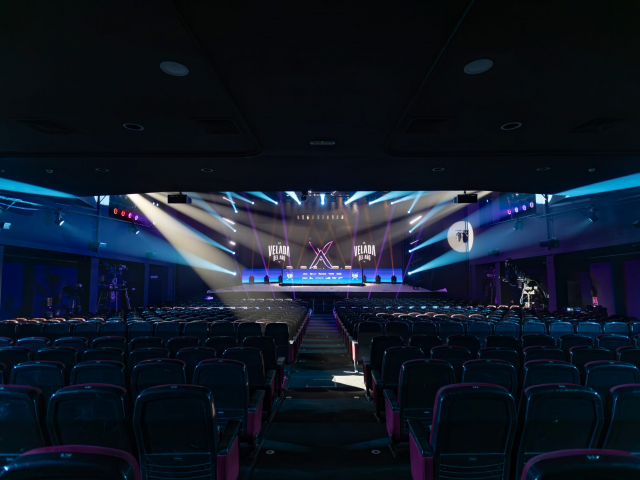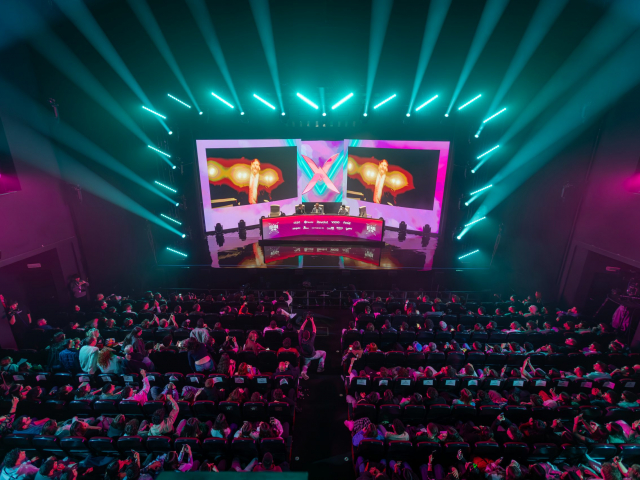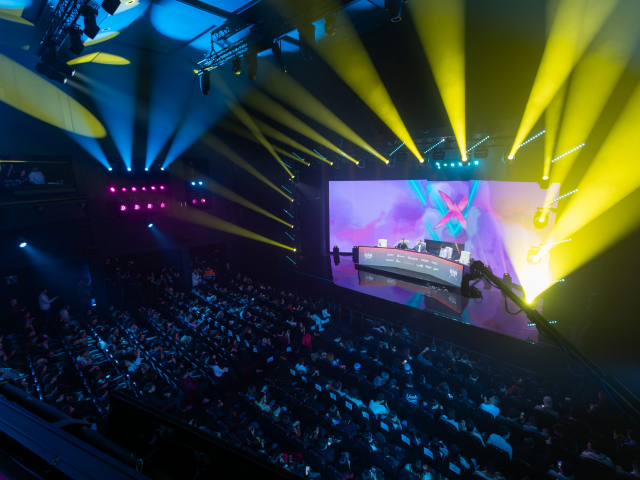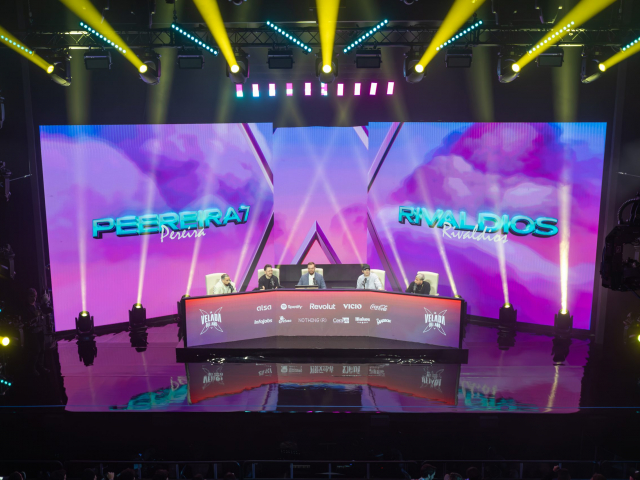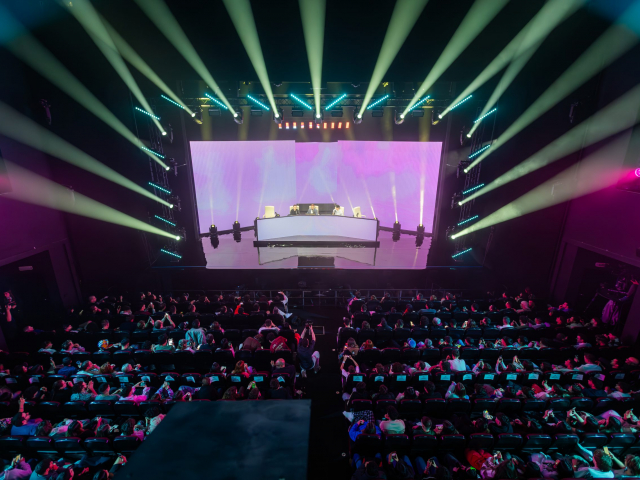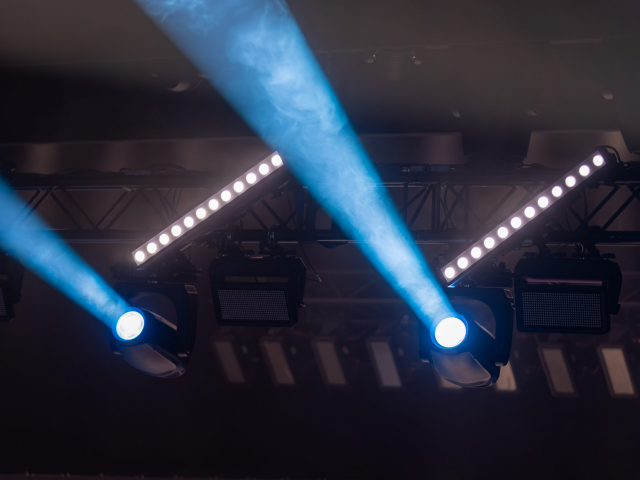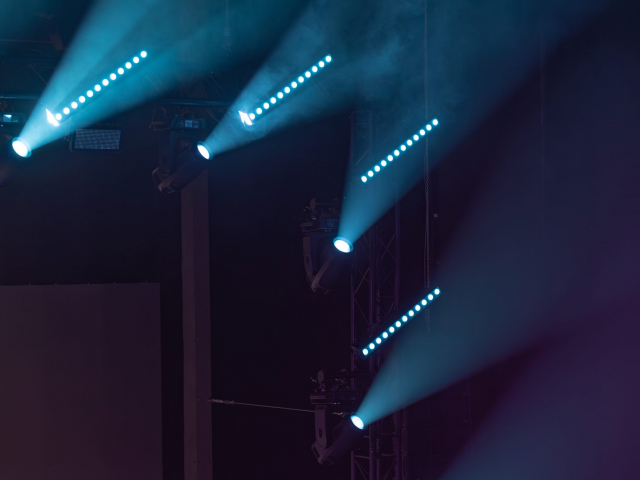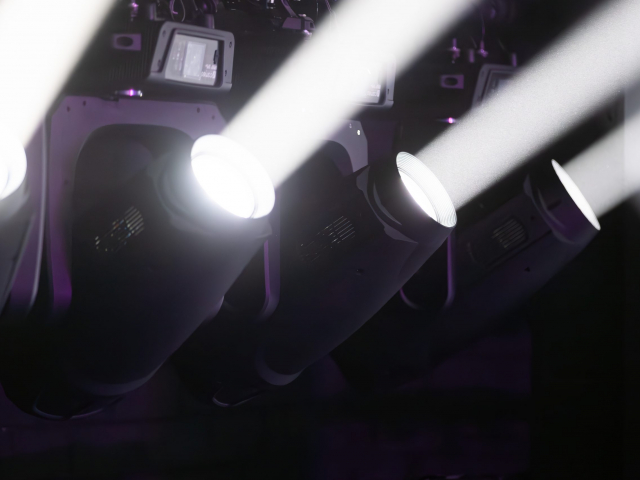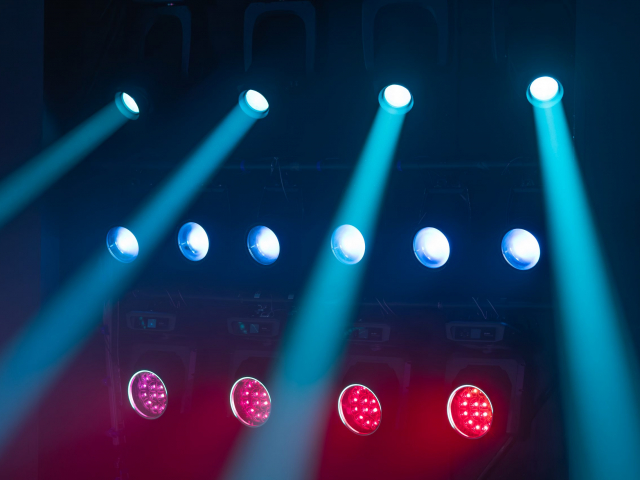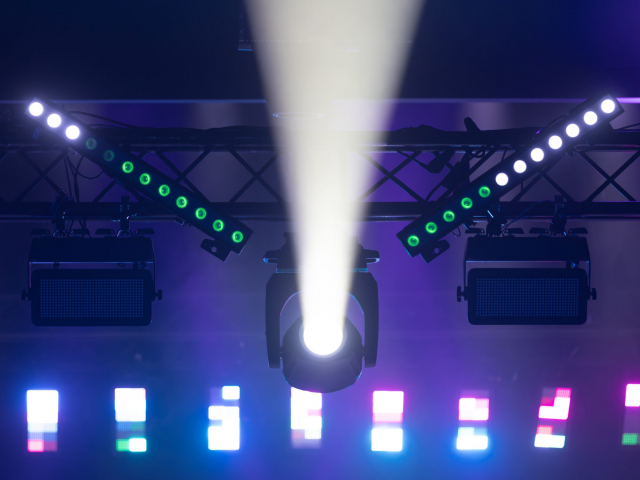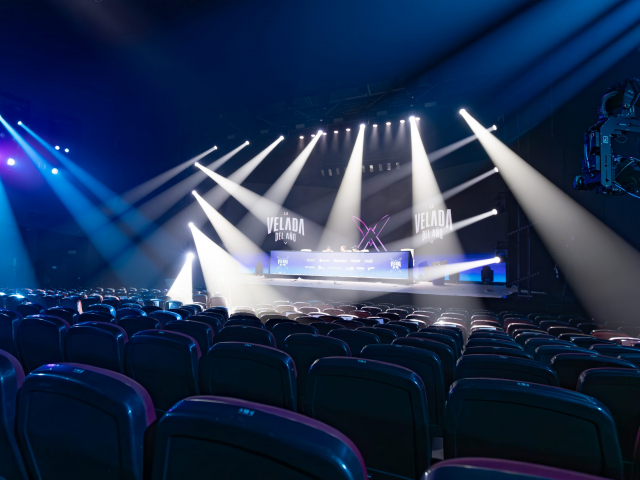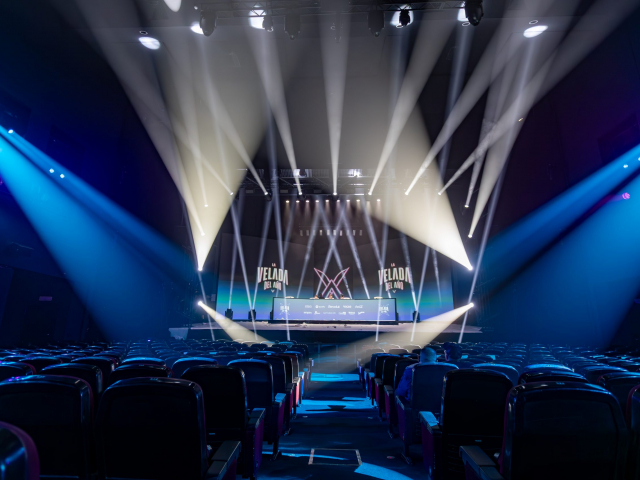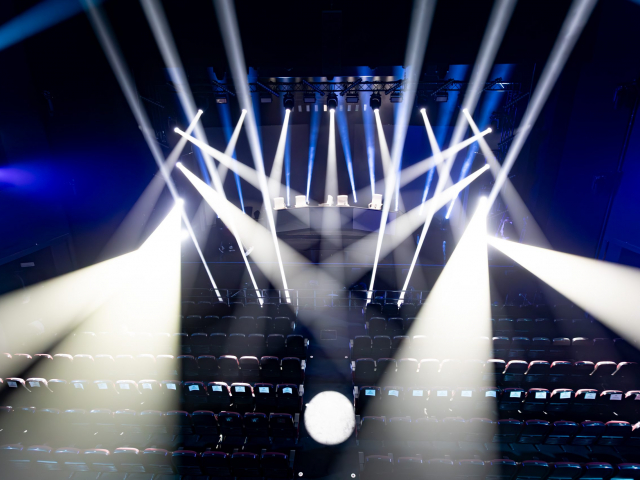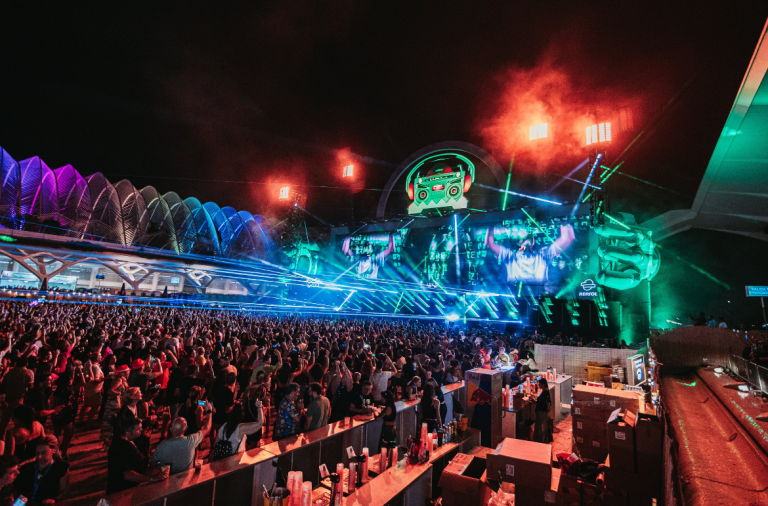Interview with light designer Toni Llobet: Setting the scene for streaming giant Ibai Llanos
13 million followers on YouTube, 17 million on Twitch – Ibai Llanos is one of Spain’s biggest streamers and was named one of the most influential Spaniards in the world by Forbes magazine in 2021. In the same year, the 30-year-old began hosting the event series ‘La Velada del Año’, a highly successful annual amateur boxing event with internet streamers and other celebrities that takes place in the country’s largest sports stadiums. Even the announcement of the participants in the historic Teatre Victoria in Barcelona became a major event. We spoke to lighting designer and cinematographer Toni Llobet about the staging and his use of Cameo lights.
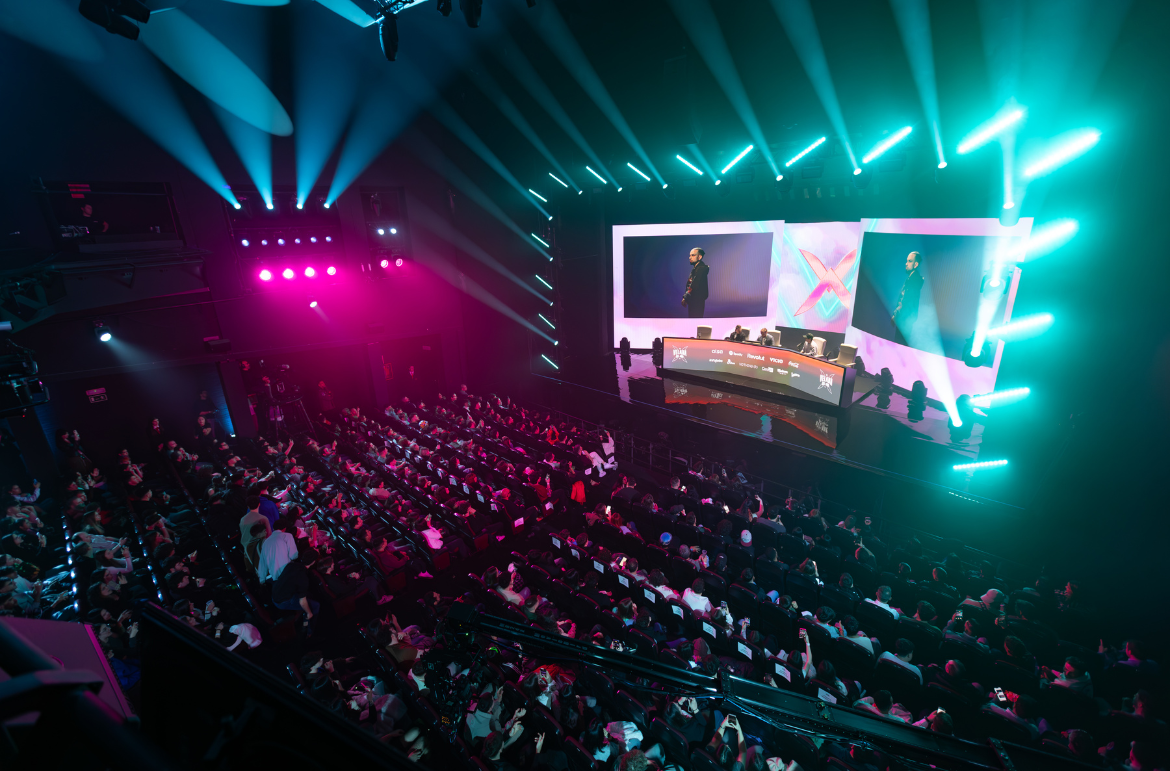
Toni, please tell us something about how you got involved in this project.
Toni Llobet: A few years ago, Ibai Llanos’ production team contacted me, shortly after the pandemic. Since then, we have worked together on various projects that are very different from each other, but always with that touch of fun and challenge that makes them special. Ibai has that gift to invent events, programmes and shows with very unique formats. In this case they called me to be in charge of the lighting design, the operation of the show, and for adjusting all the levels as director of photography, so that the result on camera would be visually appealing, which in the end is where we have the most viewers in this type of project.
A famous streaming influencer announces a boxing event in a historic theatre – have you done anything similar in the past?
Toni Llobet: Yes! This is the second year that we are presenting “La Velada del Año” at the Teatre Victòria. This will be the fifth edition of the event, and I joined as lighting designer from the second one. Every year the project grows: more dimensions, more responsibility, and also more emotion. It’s a beautiful madness.
“On these projects, camera lighting is key.”
Toni Llobet, light designer and cinematographer
What did you attach particular importance to regarding the lighting design? How do you stage an event like this?
Toni Llobet: Last year we took the design from the resident production (Mago Pop) and simply added a new layer of programming plus some extra floor elements. But this year it was another film. The resident production was none other than Dagoll Dagom’s Mar i Cel, with a boat to life-size on stage… and it cannot be dismantled. You can only move it to one side of the stage, which was one of the big challenges. The Far Productions team designed screens and scenery that allowed us to visually fit that boat into the set and completely cover it up, freeing up front space for our production. But with all the company’s equipment behind the screens, we had to do a completely new lighting design.
© Gisela Jane
On these projects, camera lighting is key. It’s where the bulk of the audience is. But we also need to generate that ‘wow effect’ live. I distributed the spotlights strategically throughout the theatre so that in any shot there would always be effects and flashes to provide visual continuity. I find it very important to coordinate thoroughly with the production team: to know where the cameras will be and what lenses will be used. This allows me to dramatize and take care of the scenes much better. For example, when boxers face each other, we break the axis to leave the audience in the background. There I play with more marked contrasts, harder shadows. And then, when we return to the main axis, the challenge is to recover the initial scene without the cut being noticeable. That coordination between all the teams is something I love. It’s like a gear where everyone plays its part.
How did you deal with the large, dominating LED screens on stage? Did the brightness of the screens influence the choice or positioning of the lighting fixtures?
Toni Llobet: Yes, absolutely. With such a bright LED screen, you have to close the aperture on the cameras, and that forces us to really tighten up the lighting in general so that the image is not flat or underexposed. The screens were very close to the characters, and you can’t lower their brightness too much, because if you do, they lose contrast, and the signal quality goes down. We reinforced the front, so we didn’t have to lower the screen so much. I used four Cameo OPUS X4 PROFILE and eight OPUS SP5 as main light. Cameo recommended me the OPUS X4 PROFILE because of their high CRI, and it was the right choice: a lot of power and very good quality.
“For me, light and video are increasingly speaking the same language, and we have to learn to use them in symbiosis.”
Toni Llobet, light designer and cinematographer
© Gisela Jane
Can you tell us a bit about your lighting setup? Where and for what tasks did you use the various Cameo lights?
Toni Llobet: I used the PIXBAR 600 IP G2 to give accents and sparkles. They brought a lot of dynamics, even in static shots or when they were just talking on stage, there was always some movement thanks to the pixel effects. The ZENIT W600 SMD have been placed vertically above the LED screen, as a visual extension of it. By using all the pixels, they acted as a visual rhyme to the content. The OPUS S5 were on the mouth truss goal, covering the upper part of the theatre to prevent it from going black on camera. The OPUS SP5 reinforced the front and also illuminated the ceiling or threw effects towards the audience. The OPUS H5 were placed on the floor, behind the casters’ table and in the orchestra pit. They gave me another layer of depth. I always try to generate different light planes for the camera.
© Gisela Jane
The OTOS W6 were placed in a side box, illuminating the walls perpendicular to the stage. In general shots, I zoomed them open and projected patterns from Resolume. If I needed light on the audience, I used them in wash mode, creating very nice side light entrances. Finally, the OPUS X4 PROFILE – our front-end beasts, which were fighting directly with the brightness of the LED screens.
© Gisela Jane
Which fixture would you like to highlight in particular?
Toni Llobet: The OTOS W6. This was the first time I used them, and they were wonderful. I love that they allow hybrid control: DMX for the basics (pan, tilt, dimmer, zoom), and then video signal for all the pixels. I’m using more and more video software to take channels away from the lighting console, and devices like the OTOS W6 go in that direction. They are like mini fat pixel LED screens with pan and tilt.
For me, light and video are increasingly speaking the same language, and we have to learn to use them in symbiosis. In this project we used the OTOS W6 like that: when they were decorative, the content came from Resolume; when we needed them as a wash, we passed the control to the Avolites console with a crossfade. Also, a special mention to my great team at SoArtPrat, led by Oriol Pino and Xavier Batallé. Without them, none of this would have been possible.
©Gisela Jane
What do you like about Cameo as a brand?
Toni Llobet: I like the versatility of Cameo’s fixtures, and the constant innovation. Year after year they bring out products that are more and more powerful and pleasant to use.
What special projects do you have coming up next?
Toni Llobet: Right now, I’m fully involved in “La Velada del Año 5”, which will take place in the La Cartuja Stadium in Seville. I also have a couple of videoclips in progress as well as finishing the postproduction of a short film we shot in a small village in France. I’m not complaining. As long as there are cameras and lights around, I’m happy!
The following Cameo products were used for the “La Velada del Año” presentation:
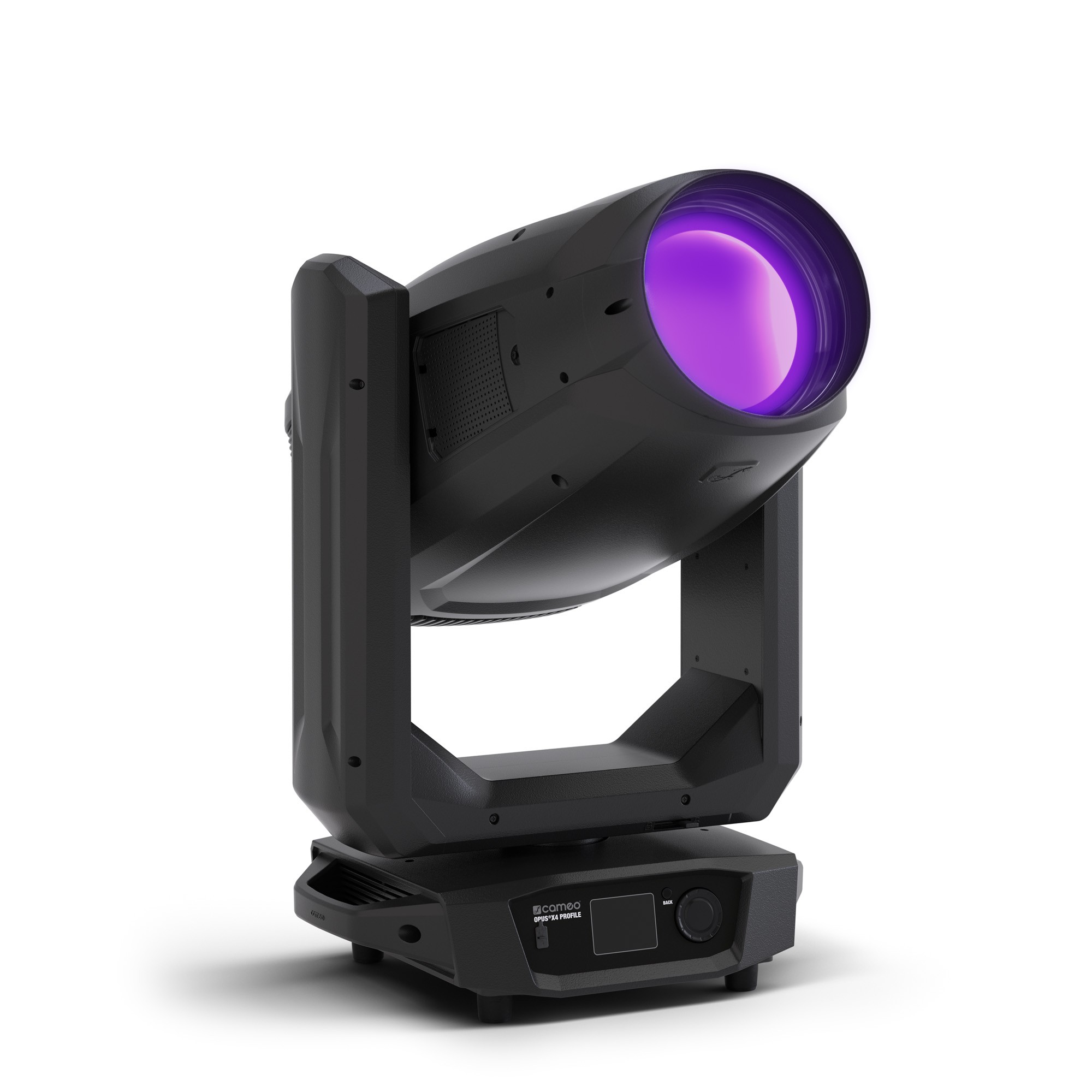
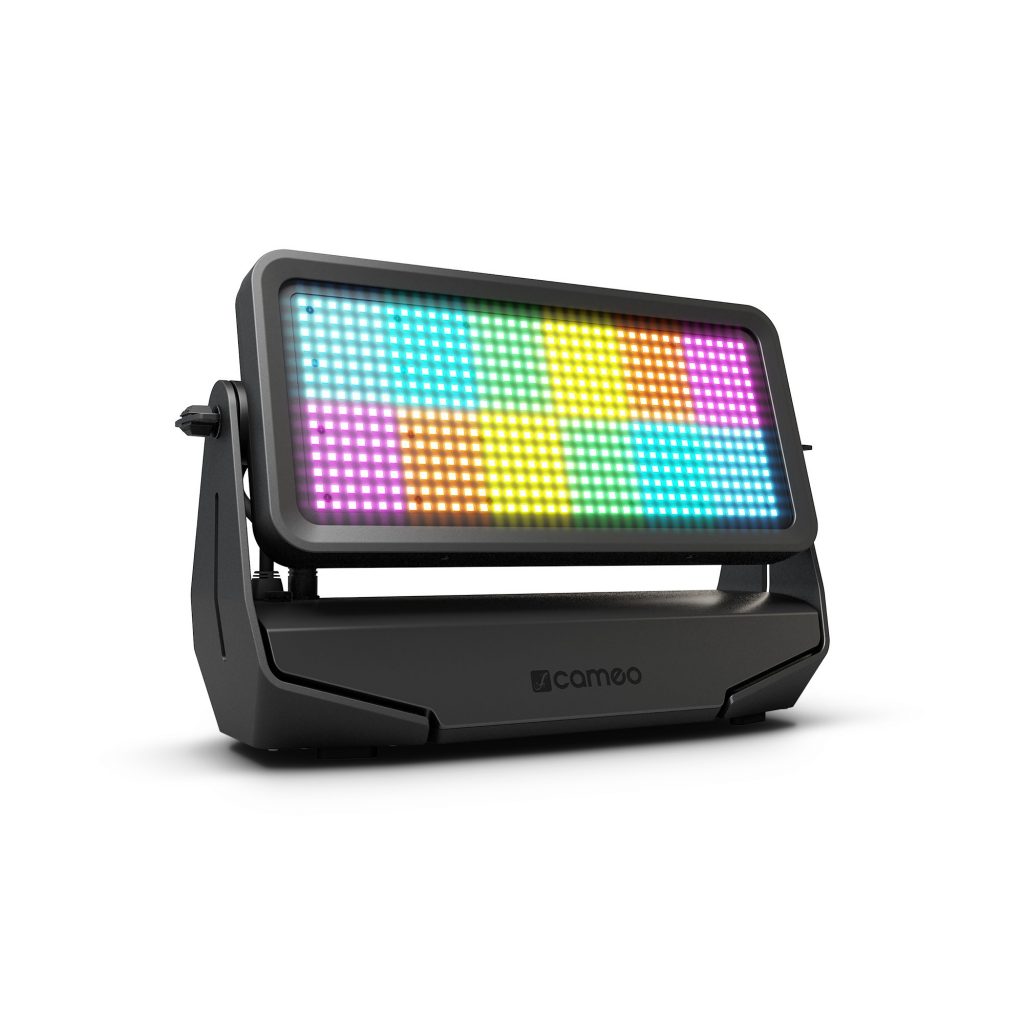
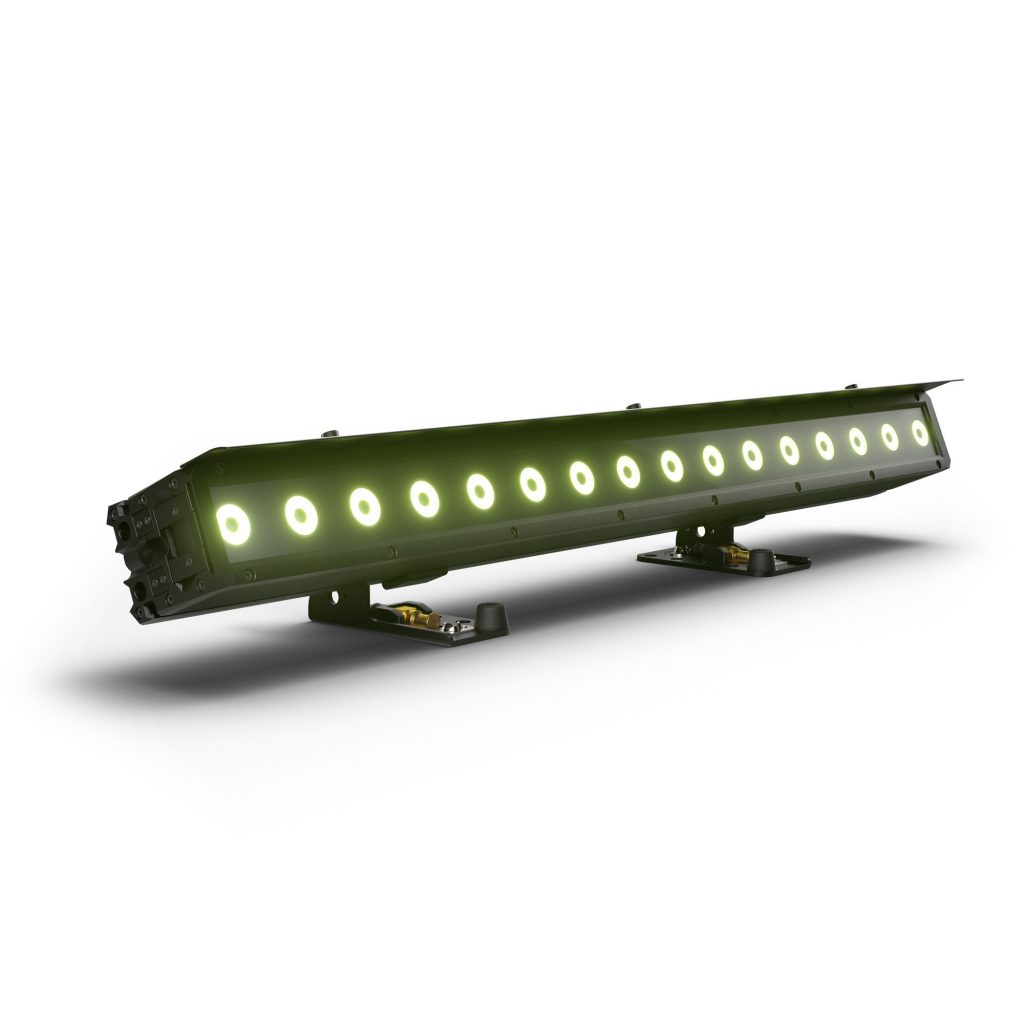
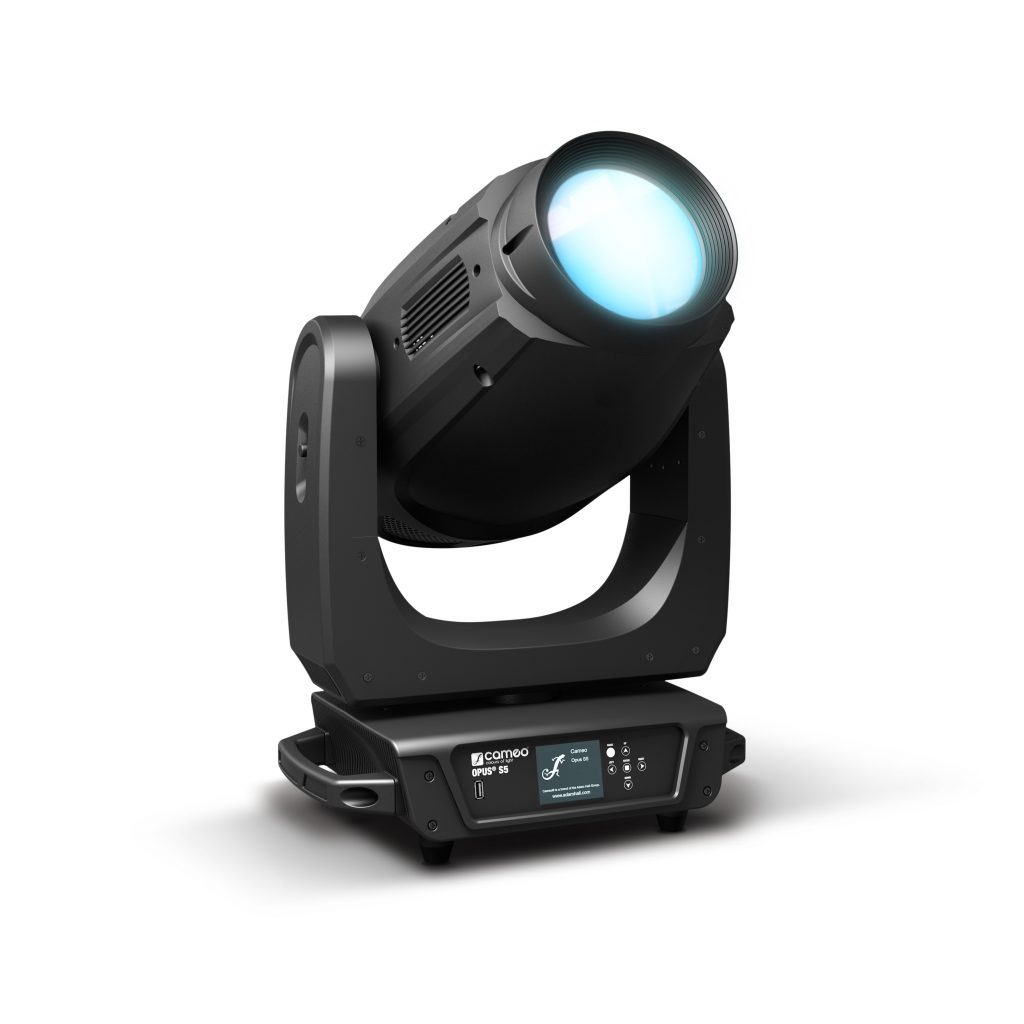
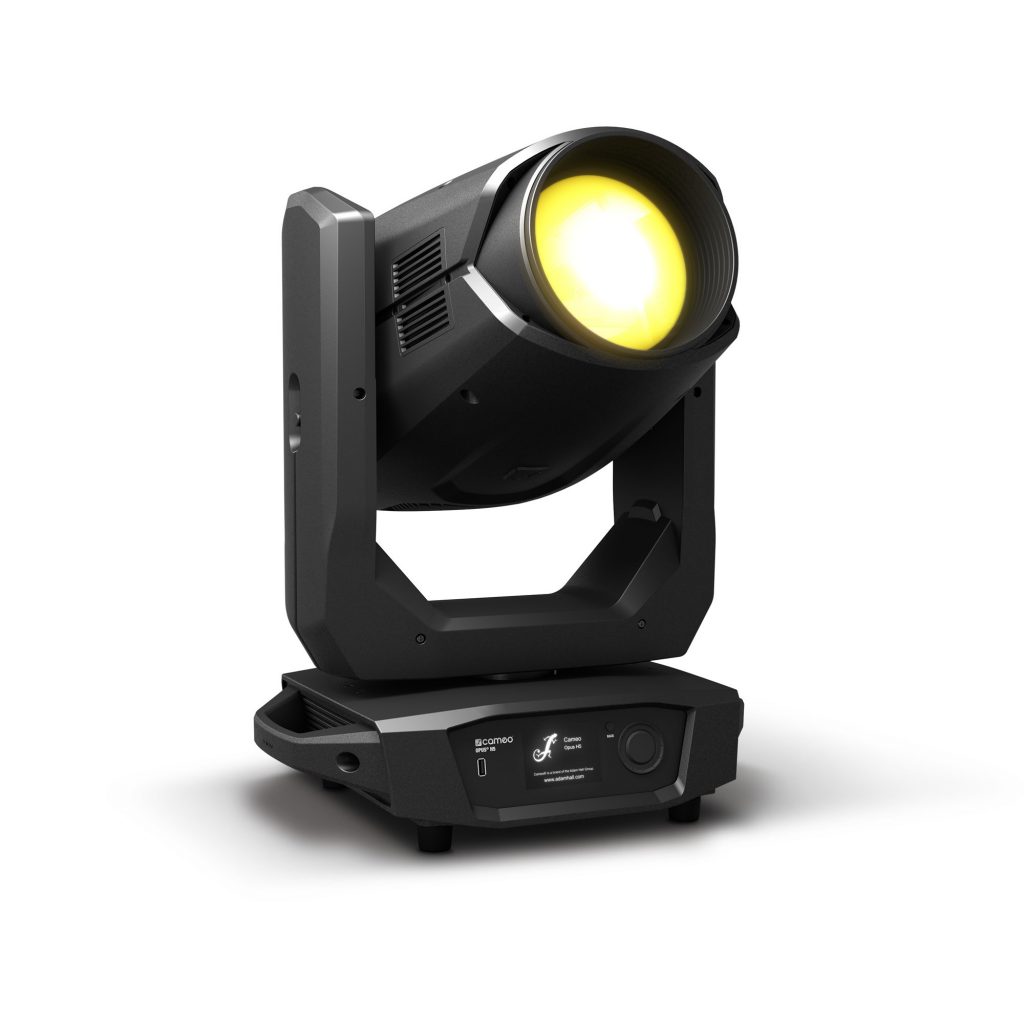

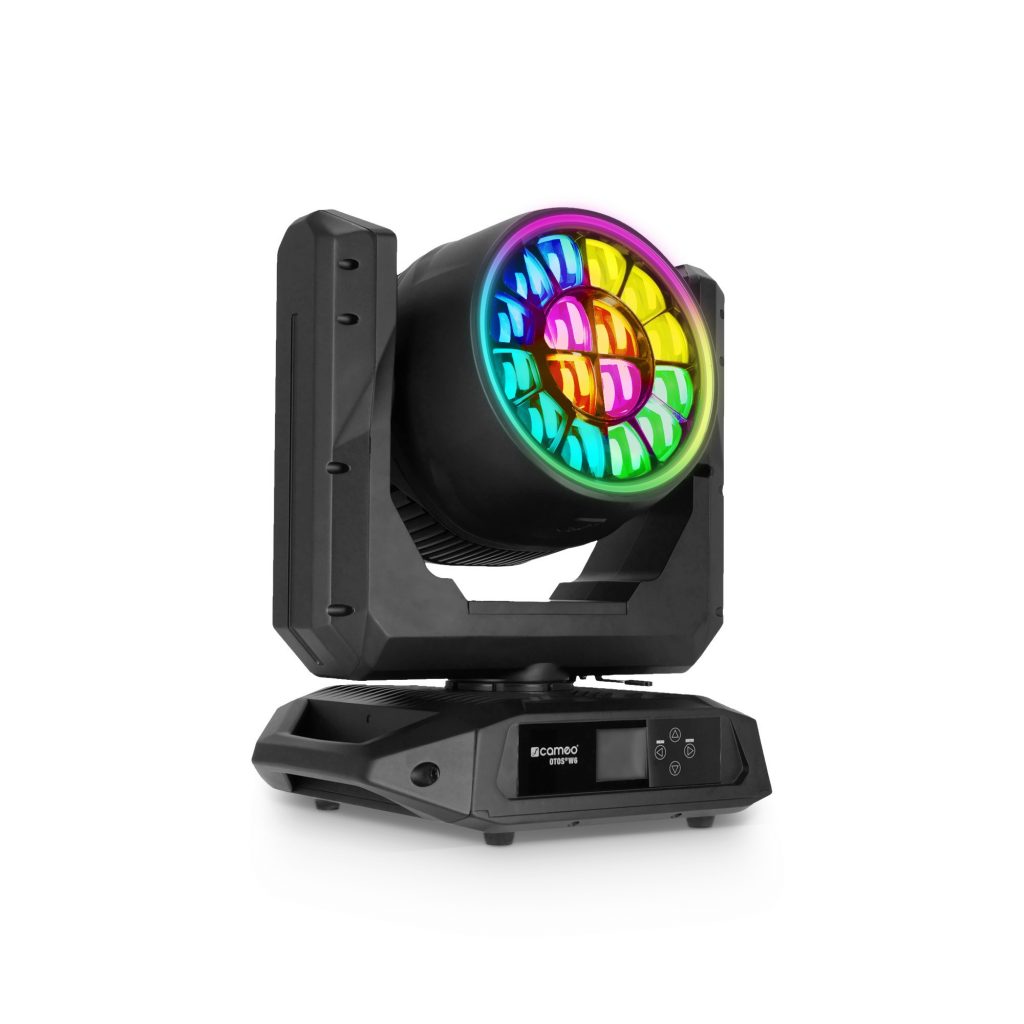

#Cameo #ForLumenBeings #EventTech #ExperienceEventTechnology
Further information:
toni-llobet.com
teatrevictoria.com
infolavelada.com
cameolight.com
adamhall.com


